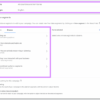What you should be asking potential clients is crucial for a successful partnership. This guide delves into the key questions you need to ask to understand their needs, evaluate project feasibility, define expectations, assess their communication style, identify potential conflicts, build trust, and determine the budget and payment terms.
Effective questioning goes beyond simply gathering information. It’s about actively listening, understanding the client’s motivations, and setting the stage for a productive and mutually beneficial collaboration. This process lays the foundation for a successful project, ensuring clarity and alignment from the outset.
Understanding Client Needs
Knowing your client’s needs is crucial for tailoring solutions that truly address their challenges and unlock their potential. A deep understanding of their motivations, goals, and pain points allows for a more effective and satisfying collaboration. This, in turn, leads to a higher likelihood of successful outcomes and strong client relationships.
Uncovering Core Motivations and Goals
Understanding a client’s motivations and goals is essential to building a successful partnership. It’s about moving beyond surface-level details to grasp the underlying drivers behind their needs. This involves probing beyond stated objectives to identify the deeper reasons behind the project or business issue.
- Identifying the client’s desired outcomes, beyond the stated goals, provides a richer understanding of their motivations. For example, a company seeking a new website might not only want increased traffic but also a more streamlined user experience, improved brand perception, or even expansion into new markets.
- Exploring the client’s long-term vision and strategic priorities helps determine how the project aligns with their overall business objectives. This includes understanding their aspirations for growth, market positioning, and overall company trajectory.
- Determining the client’s key performance indicators (KPIs) allows you to assess the success of your solutions in terms of tangible results. Understanding their KPIs ensures that your efforts are directly contributing to measurable improvements.
Asking Open-Ended Questions
Open-ended questions are vital for encouraging detailed responses, revealing hidden needs, and gaining a deeper understanding of the client’s perspective. They allow for a more organic and insightful conversation, fostering a more collaborative and mutually beneficial relationship.
- Open-ended questions invite clients to elaborate on their thoughts and feelings, going beyond simple yes or no answers. For instance, instead of asking “Are you satisfied with your current website?”, you might ask “What are your biggest frustrations with your current website?”.
- By prompting clients to articulate their needs and concerns in their own words, you gain a richer understanding of their context and perspective. This allows you to tailor your approach and solutions more effectively.
- Open-ended questions foster a more conversational tone, allowing for a more natural and insightful exchange of ideas. This facilitates a deeper understanding of the client’s business and project goals.
Identifying Pain Points, Challenges, and Opportunities, What you should be asking potential clients
Pinpointing the client’s pain points, challenges, and opportunities is essential to tailoring a solution that truly addresses their needs. This involves a proactive approach to understanding their current situation, potential obstacles, and areas for improvement.
- Probing for specific challenges and pain points in their current operations helps you understand areas where your services can offer tangible improvements. For example, a client facing declining sales might be experiencing a lack of effective marketing strategies or a need for improved customer service.
- Identifying opportunities for improvement allows you to present innovative solutions that go beyond simply addressing existing problems. This might involve exploring new market segments, streamlining internal processes, or leveraging emerging technologies.
- Analyzing their competitive landscape and market positioning reveals potential areas where your services can provide a significant advantage. This requires an understanding of their current market share, competitor strategies, and overall industry trends.
Understanding Industry and Market Context
Understanding the client’s industry and market context is essential for providing relevant and effective solutions. It’s about going beyond the specifics of their project to understand the bigger picture within their sector.
- Researching the client’s industry and market allows you to tailor your approach to the unique challenges and opportunities within their sector. For instance, a company in the technology sector will face different challenges than a company in the retail sector.
- Analyzing market trends and competitor activities helps you identify potential risks and opportunities for the client’s business. This allows you to provide insightful recommendations and tailored solutions.
- Understanding the current market landscape allows you to identify industry-specific best practices and leverage your knowledge to create innovative solutions.
Comparing Open-Ended and Closed-Ended Questions
Different types of questions yield different levels of information. Understanding the distinction between open-ended and closed-ended questions is key to gathering comprehensive insights.
| Question Type | Description | Example |
|---|---|---|
| Open-Ended | Encourages detailed responses, exploring the “why” behind answers. | “What are your biggest concerns about your current marketing strategy?” |
| Closed-Ended | Limits responses to specific answers (yes/no, specific choices). | “Are you satisfied with your current marketing strategy?” |
Evaluating Project Feasibility: What You Should Be Asking Potential Clients
Understanding client needs is crucial, but equally important is assessing the viability of a project. Project feasibility analysis ensures that a project aligns with the client’s goals, resources, and timeline, minimizing risks and maximizing chances of success. This step involves a rigorous evaluation of the project’s potential, considering practical limitations and opportunities.Evaluating project feasibility goes beyond simply identifying potential problems.
It’s about proactively anticipating challenges and developing strategies to mitigate them. A thorough assessment can reveal hidden obstacles and pave the way for informed decision-making, ultimately leading to a more successful and profitable outcome for both the client and the project team.
Assessing Project Resources
Identifying and evaluating a client’s resources is essential for determining project feasibility. This involves understanding the existing capabilities and potential limitations. A comprehensive evaluation considers not just financial resources but also human capital, technological infrastructure, and operational processes. This holistic view helps predict potential bottlenecks and resource constraints that could impact project timelines and outcomes.
- A critical factor is evaluating the client’s existing infrastructure and technology. Assessing compatibility with project requirements and identifying potential upgrades or modifications is key to a smooth execution.
- Understanding the client’s human capital is essential. Project teams need to evaluate the skill sets and experience levels of the client’s staff, and how they can be effectively integrated into the project.
- Financial resources are also crucial. Analyzing the client’s budget, financial projections, and access to funding sources provides a realistic picture of their ability to support the project’s financial demands.
Project Timeline Evaluation
Project timelines are a critical component of feasibility assessment. An accurate estimation of the project duration, including all phases from initiation to completion, is crucial for resource allocation and overall success.
- Defining realistic milestones and deadlines for each phase of the project, and identifying potential delays or dependencies, allows for better risk management.
- Evaluating the client’s existing processes and procedures for potential integration into the project timeline. This will ensure efficient resource allocation and smooth transitions.
- Estimating the time required for each task and identifying potential bottlenecks or roadblocks in the project timeline. This allows for proactive planning to mitigate delays.
Budgetary Analysis
Budgetary constraints play a significant role in determining the viability of a project. A detailed examination of projected costs and potential expenses is crucial for planning and resource allocation.
- Evaluating the overall budget and determining if it adequately covers all anticipated expenses is critical.
- Developing a detailed budget breakdown that clearly Artikels costs associated with different project phases and resources.
- Analyzing potential cost overruns and identifying contingency plans to address budget variances is key to project sustainability.
Alignment with Long-Term Strategy
Project feasibility should also consider its alignment with the client’s long-term strategic goals. A misalignment can lead to wasted resources and decreased overall value.
- Evaluating how the project fits into the client’s overall business strategy, ensuring it aligns with their objectives and long-term goals.
- Determining whether the project contributes to achieving specific strategic goals, such as expanding into new markets, improving operational efficiency, or enhancing customer relationships.
- Assessing the potential long-term impact of the project on the client’s business operations, considering both positive and negative implications.
Risk and Challenge Assessment
Identifying potential risks and challenges is crucial for developing contingency plans and mitigating potential negative impacts.
- Analyzing potential risks and challenges that may arise during the project lifecycle, considering factors such as market fluctuations, regulatory changes, and technological advancements.
- Developing contingency plans to address potential risks and challenges, ensuring the project can adapt to unforeseen circumstances.
- Assessing the likelihood and potential impact of each identified risk, allowing for prioritization and focused mitigation efforts.
Project Feasibility Assessment Table
| Criteria | Questions |
|---|---|
| Resources | Are sufficient resources (human, financial, technological) available? |
| Timeline | Is the proposed timeline realistic and achievable, considering dependencies and potential delays? |
| Budget | Does the allocated budget adequately cover all anticipated expenses? Are there contingency plans for potential cost overruns? |
| Alignment with Strategy | Does the project align with the client’s long-term strategic goals and objectives? |
| Risks and Challenges | What are the potential risks and challenges associated with the project? Are there mitigation strategies in place? |
Defining Scope and Expectations
Setting clear project boundaries and expectations from the outset is crucial for successful client collaborations. A well-defined scope prevents misunderstandings, ensures everyone is on the same page, and ultimately leads to a project that meets the client’s needs and exceeds their expectations. Defining this scope requires proactive communication and a willingness to ask clarifying questions.Establishing a shared understanding of the project’s parameters is a vital step in managing client expectations and preventing costly rework.
This proactive approach ensures that the project remains focused on the desired outcomes, and minimizes the risk of surprises or deviations. Open communication and thorough planning form the bedrock of any successful project.
Establishing Project Boundaries
Understanding the project’s scope involves identifying specific tasks, deliverables, and timelines. Clearly outlining these parameters is crucial for managing expectations and avoiding potential conflicts. By defining the project’s limits, you can focus efforts on achieving agreed-upon goals.
- Defining the project’s objectives ensures a shared understanding of the desired outcome. This clarity is essential to ensure everyone involved is working towards the same goals.
- Clearly identifying the project’s deliverables, including specific outputs, formats, and timelines, establishes a concrete framework for success. This detailed approach allows for realistic assessment of progress and successful completion.
- Explicitly outlining the project’s boundaries prevents scope creep. This proactive approach safeguards the project’s focus, maintains its timeline, and keeps costs in check.
Clarifying Roles and Responsibilities
Defining roles and responsibilities is critical for smooth project execution. Assigning specific tasks and outlining expectations for each party involved helps prevent overlaps and ensures accountability. This clarity is paramount for efficient workflows and the successful completion of the project.
- Identifying the specific tasks associated with each role ensures that everyone understands their responsibilities within the project. This transparency is vital for preventing confusion and ensuring that everyone is working towards the same goal.
- Establishing clear lines of communication between team members and stakeholders is essential for managing expectations and ensuring smooth project execution. This proactive approach minimizes the risk of misunderstandings and ensures that communication channels are open.
- Defining accountability for each task ensures that all parties involved are responsible for completing their assigned work. This clarity is vital for project management and ensures that deadlines are met.
Defining Desired Outcomes and Deliverables
Defining the desired outcomes and deliverables is fundamental for evaluating the project’s success. This involves a clear understanding of what the project aims to achieve and the tangible outputs expected.
- Identifying specific, measurable, achievable, relevant, and time-bound (SMART) goals sets a clear direction for the project. This ensures that the project stays focused on achieving tangible outcomes.
- Creating a comprehensive list of deliverables clarifies what the project is expected to produce. This approach ensures a shared understanding of the tangible outputs, which contributes to project success.
- Establishing measurable metrics for evaluating project success allows for objective assessment of progress and achievement of goals. This allows for objective evaluation and prevents potential disagreements.
Addressing Potential Misunderstandings
Proactive communication and a willingness to address potential misunderstandings are key to project success. By anticipating and addressing concerns early, you can mitigate risks and foster a collaborative environment.
- Implementing clear communication channels between stakeholders, including regular meetings and progress reports, promotes transparency and allows for proactive issue resolution.
- Holding regular meetings to discuss project progress, address concerns, and ensure alignment among all parties promotes transparency and ensures that the project remains on track.
- Creating a feedback mechanism allows for early identification of issues and allows for proactive problem solving.
Examples of Questions to Define Project Scope
The following table provides examples of questions to define project scope, including potential follow-up questions for clarification.
| Question | Potential Follow-up Questions |
|---|---|
| What are the specific goals of this project? | What key performance indicators (KPIs) will be used to measure success? |
| What are the expected deliverables? | What are the specific formats and timelines for each deliverable? |
| Who are the key stakeholders involved? | What are the specific roles and responsibilities of each stakeholder? |
| What are the project’s boundaries? | Are there any specific exclusions or limitations? |
| What is the estimated project timeline? | What are the key milestones and deadlines associated with the timeline? |
Assessing Client Communication Style
Understanding how a client prefers to communicate is crucial for a successful project. Effective communication ensures that project goals are aligned, expectations are clearly defined, and any potential misunderstandings are proactively addressed. This proactive approach fosters trust and strengthens the client-contractor relationship, leading to a more positive and productive outcome.Successful project execution often hinges on the ability to adapt communication styles to meet individual client needs.
A client who prefers detailed reports might be frustrated by overly concise updates, while another who thrives on quick updates might find lengthy documents overwhelming. Understanding these nuances allows you to tailor your communication approach, resulting in better collaboration and a smoother project trajectory.
Identifying Communication Preferences
Understanding a client’s communication preferences is essential for building a strong working relationship. It goes beyond simply knowing their preferred method of contact; it involves delving into their preferred style, frequency, and desired depth of information. By proactively adapting your communication style, you ensure the client feels heard, understood, and valued throughout the project lifecycle.
Preferred Communication Channels
A client’s preferred communication channels reveal valuable insights into their work style and personal preferences. This understanding allows you to tailor your communication strategy, increasing the likelihood of efficient and effective information exchange. The choice of communication channel often reflects the client’s comfort level and the type of information they are seeking.
- Email is a common and formal channel, often used for detailed information and official communications. A client who prefers email might appreciate comprehensive project updates and detailed reports delivered via this method.
- Phone calls provide immediate feedback and facilitate more personal interactions. A client who prefers phone calls might appreciate the ability to ask questions and receive immediate clarification.
- Video conferencing enables real-time interaction and visual communication, which can be particularly useful for presentations, discussions, and collaborative sessions. A client who prefers video conferencing might appreciate the opportunity for visual engagement and real-time feedback.
- Instant messaging tools provide quick and informal communication. A client who prefers instant messaging might prefer brief updates and quick responses.
Communication Frequency
Understanding the desired communication frequency is just as important as identifying the preferred channels. This helps maintain a productive pace and ensures the client feels adequately informed without being overwhelmed.
So, you’re ready to nail down those potential clients? Before you dive headfirst into designing dazzling landing pages, ask yourself—and them—crucial questions about their needs. What are their specific goals? What pain points are they trying to solve? Knowing the answers to these questions will inform your entire strategy.
Plus, check out these 12 tools that can help you build high converting landing pages here. Understanding their goals will help you tailor your landing page design for maximum impact, ultimately leading to more conversions. Remember, effective communication is key.
- Some clients might prefer daily updates, while others might find this excessive. Tailoring the frequency to the client’s specific needs prevents information overload and maintains a healthy flow of communication.
- Frequent communication is not always the best approach. A client might prefer a more strategic approach, opting for weekly or bi-weekly updates instead. Understanding these nuances ensures you are providing the right amount of information at the right time.
- Determining the optimal frequency involves evaluating the project’s complexity and the client’s comfort level with the pace of updates.
Adapting Communication Styles
Adapting your communication style to meet the client’s needs is vital for project success. This adaptability fosters trust, strengthens the client-contractor relationship, and ensures that project goals are met effectively. By mirroring the client’s communication style, you demonstrate a proactive understanding of their preferences and expectations.
Comparing Communication Styles
Different communication styles reflect various personality types and work preferences. A client who prefers direct communication might appreciate concise updates, while another who prefers indirect communication might appreciate more nuanced explanations. Understanding these nuances helps you adapt your communication strategy and build stronger client relationships.
| Communication Preference | Description | Example Questions |
|---|---|---|
| Direct | Clear, concise, and to-the-point communication. | “What are your specific expectations regarding project updates?” |
| Indirect | More nuanced and detail-oriented communication. | “How can we best ensure that you feel informed throughout the project?” |
| Formal | Professional and structured communication. | “What format for reporting would best suit your needs?” |
| Informal | Friendly and approachable communication. | “How often would you prefer updates, and what form do you prefer?” |
Identifying Potential Conflicts
Anticipating and addressing potential conflicts proactively is crucial for a successful project. Ignoring potential disagreements can lead to costly delays, rework, and ultimately, project failure. By understanding potential sources of friction and developing strategies to resolve them, you can create a more harmonious and productive working relationship with your clients.
Proactive Conflict Resolution Strategies
Proactive conflict resolution involves identifying potential points of contention before they escalate into full-blown disagreements. This often involves open communication and a clear understanding of each party’s expectations and priorities. By anticipating potential issues, you can develop strategies to address them before they negatively impact the project. This approach fosters a more collaborative environment, leading to a more successful outcome.
Before diving into setting up your virtual classroom, think about what questions you need to ask potential clients. Crucial questions include their learning goals and preferred communication styles. This will help you tailor your online courses effectively. Want to know how to run a virtual classroom online with WordPress? Check out this helpful guide: how to run a virtual classroom online with wordpress.
Once you have a better understanding of their needs, you can create a customized learning experience for them and make the most of your WordPress-based platform.
Understanding Client Decision-Making Processes
Understanding how a client makes decisions is vital in anticipating potential conflicts. Clients may rely on different factors, such as budget constraints, timelines, or specific project requirements, when making choices. Analyzing the client’s past projects, organizational structure, and decision-making patterns can help predict their behavior during the current project. This knowledge enables you to anticipate and address potential disagreements before they arise.
Identifying Potential Areas of Disagreement
Potential areas of disagreement within a project can stem from various sources. Varying interpretations of project requirements, differing opinions on design approaches, or conflicting priorities between the client and the project team can all lead to conflicts. Unclear communication channels, lack of defined roles and responsibilities, or an absence of established project procedures can also contribute to disagreements.
Common Project Conflicts and Potential Mitigation Strategies
| Common Project Conflict | Potential Questions to Address the Conflict |
|---|---|
| Budgetary Constraints | What is the client’s tolerance for cost overruns? What are their specific budgetary concerns? What are the client’s priorities regarding budget allocation? |
| Scope Creep | How will changes to the project scope be managed? What is the process for evaluating and approving changes? What are the client’s criteria for determining scope changes? |
| Timeline Conflicts | What is the client’s understanding of the project timeline? What are their expectations regarding project milestones? How will the team manage potential delays and adjust the timeline accordingly? |
| Communication Gaps | How does the client prefer to receive updates and feedback? What is the frequency of communication that is most effective for them? What are the client’s communication preferences for project updates? |
| Design Differences | What are the client’s design preferences and priorities? What are the client’s expectations for design revisions? What are the criteria for evaluating different design options? |
Building Trust and Rapport

Establishing a strong rapport with clients is crucial for a successful working relationship. It’s not just about getting the project done; it’s about fostering a connection where clients feel understood, valued, and comfortable sharing their needs and expectations. This phase builds trust, which is essential for long-term partnerships and positive outcomes.Effective communication, including active listening and demonstrating empathy, are key components in building this rapport.
By showing genuine interest in the client’s business and goals, you can cultivate a foundation for mutual respect and collaboration. This proactive approach often paves the way for smoother project execution and increased client satisfaction.
Questions to Build Rapport
Understanding the client’s business goes beyond just gathering project specifications. It’s about understanding their motivations, challenges, and goals. Probing questions that reveal insights into the client’s perspective are essential for building a strong rapport. Asking thoughtful questions demonstrates genuine interest and a willingness to understand their unique situation.
- Instead of asking “What are your goals?”, a more effective approach is to ask “What are the key business objectives you hope to achieve with this project?” This demonstrates an interest in the larger context and not just the immediate project.
- Rather than “What are your current challenges?”, a better alternative is “What are the biggest hurdles you’re facing in achieving your objectives?” This shows a willingness to explore the underlying issues.
- Asking “How does this project fit into your overall business strategy?” encourages a deeper understanding of the client’s vision and the role of the project within it.
Active Listening and Empathy
Active listening is more than just hearing; it’s about truly understanding what the client is saying, both verbally and nonverbally. Empathy involves understanding the client’s perspective and acknowledging their feelings. These combined strategies demonstrate a commitment to understanding the client’s needs, and therefore, lead to more effective communication.
- Demonstrating active listening through techniques like summarizing key points, asking clarifying questions, and maintaining eye contact conveys a genuine interest in understanding the client’s viewpoint.
- Empathy allows you to anticipate and address potential concerns, leading to a more positive client experience. This is about putting yourself in the client’s shoes to understand their challenges and anxieties.
- A simple acknowledgment of the client’s feelings, such as “I understand this is a significant change for your team,” demonstrates empathy and validation.
Examples of Questions to Show Genuine Interest
Asking questions that show genuine interest in the client’s business beyond the immediate project is vital for building trust. These questions help paint a more complete picture of the client’s organization and motivations.
- Instead of “What are your current marketing strategies?”, a more insightful question is “What are the biggest challenges you’re facing in reaching your target audience?” This question delves into the specific problems and seeks solutions.
- A better alternative to “What are your expectations for this project?”, is “How does this project contribute to your long-term strategic goals?” This focuses on the broader context and the client’s overall vision.
- A more effective approach than “What’s your budget?”, is “How does your budget align with your overall investment strategy for growth?” This focuses on the strategic implications of the budget.
Techniques to Make Clients Feel Valued
Demonstrating value and understanding is crucial to building trust. These techniques create a positive and collaborative environment, ultimately leading to successful projects.
When vetting potential clients, it’s crucial to understand their specific needs and goals. Are they looking for a simple solution or a complex, multifaceted approach? This directly impacts the strategies you employ, like how you structure your website’s content for maximum impact. You also need to know their current online presence and how they currently attract leads to get a sense of how to best integrate your services.
For example, checking out Google’s updated documentation on EEA structured data carousels beta ( google updated documentation for eea structured data carousels beta ) can help you better understand how to optimize their search results. Ultimately, these questions will help you tailor your offerings to best meet their requirements.
- Taking the time to understand the client’s unique needs and concerns ensures their perspectives are fully considered.
- Offering constructive feedback and suggestions, delivered with respect and consideration, reinforces the value you bring to the table.
- Providing regular updates and keeping the client informed about project progress fosters transparency and builds trust.
Trust vs. Insincerity
| Trust-Building Questions | Insincere Questions |
|---|---|
| “How can we best address your specific business needs?” | “What are your budget constraints?” (asked without context) |
| “What are the key factors driving your decision-making process?” | “What are your expectations for this project?” (asked without prior discussion) |
| “What are your biggest concerns about this project?” | “What are your previous experiences with similar projects?” (used as a means to compare rather than learn) |
Determining Budget and Payment Terms

Understanding your client’s financial expectations is crucial for a successful project. A clear understanding of the budget and payment terms avoids misunderstandings and sets realistic expectations from the outset. This phase ensures that both parties are on the same page financially, fostering a strong working relationship.
Questions to Understand Budget
Knowing a client’s financial constraints is essential to assess project feasibility and manage expectations. A well-defined budget prevents surprises and allows for informed decision-making throughout the project.
- The client’s overall budget allocation for the project helps in determining the scope and the possible deliverables.
- Understanding the client’s internal approval processes for financial commitments allows you to align with the client’s organizational structure, ensuring timely approvals.
- Identifying the client’s previous project spending patterns can provide insights into their typical budgeting practices and potential financial constraints.
Questions to Understand Payment Terms
Clearly defined payment terms are vital to maintaining a professional relationship and ensuring timely project completion. A well-structured payment schedule helps manage cash flow and builds trust.
- Inquiring about the client’s preferred payment methods ensures a smooth transaction process, considering factors such as speed, security, and convenience for the client.
- Clarifying the timeline for each payment installment helps in managing cash flow and scheduling project milestones accordingly.
- Defining the process for handling potential disputes or discrepancies in payment terms prevents future conflicts and promotes transparency.
Outlining Costs and Fees
Transparent cost breakdown builds trust and reduces the risk of misunderstandings.
- A detailed breakdown of all costs, including materials, labor, and any applicable taxes, provides a comprehensive financial overview.
- Clearly defining project deliverables and associated fees helps avoid hidden costs and ensures transparency in the project budget.
- Providing multiple pricing tiers based on project scope and deliverables allows clients to choose the package that best fits their needs and budget.
Common Payment Terms
Knowing common payment terms and their implications ensures you’re aligning with industry standards and client expectations.
- Understanding the implications of upfront payments allows you to evaluate the client’s financial stability and commitment to the project.
- Informing yourself about the client’s preferred payment schedule and associated deadlines ensures a smooth project execution.
- Knowing the implications of staged payments allows for a controlled and predictable cash flow, facilitating timely project completion.
Example Questions Regarding Budget, Payment Schedules, and Methods
A structured approach to gathering this information is essential.
| Category | Question |
|---|---|
| Budget | “What is your estimated budget for this project?” |
| Budget | “Can you provide any historical data on your spending for similar projects?” |
| Payment Schedule | “What is your preferred payment schedule?” |
| Payment Schedule | “What are your internal approval processes for financial commitments?” |
| Payment Method | “What are your preferred payment methods?” |
| Payment Method | “What is your policy for handling potential discrepancies in payments?” |
Last Recap
In conclusion, asking the right questions of potential clients is fundamental to project success. By understanding their needs, evaluating feasibility, defining scope, assessing communication styles, and anticipating potential conflicts, you set the stage for a strong and trusting relationship. Remember, proactive questioning leads to informed decisions, reduced surprises, and ultimately, a more positive project outcome.






